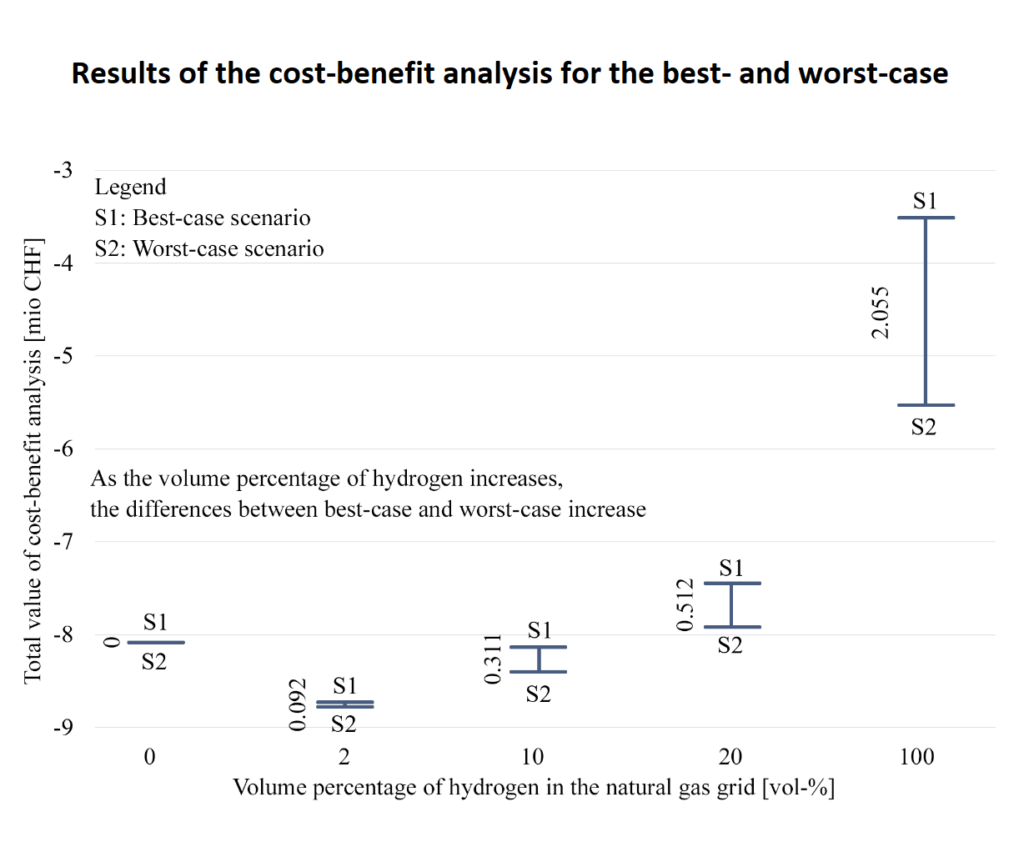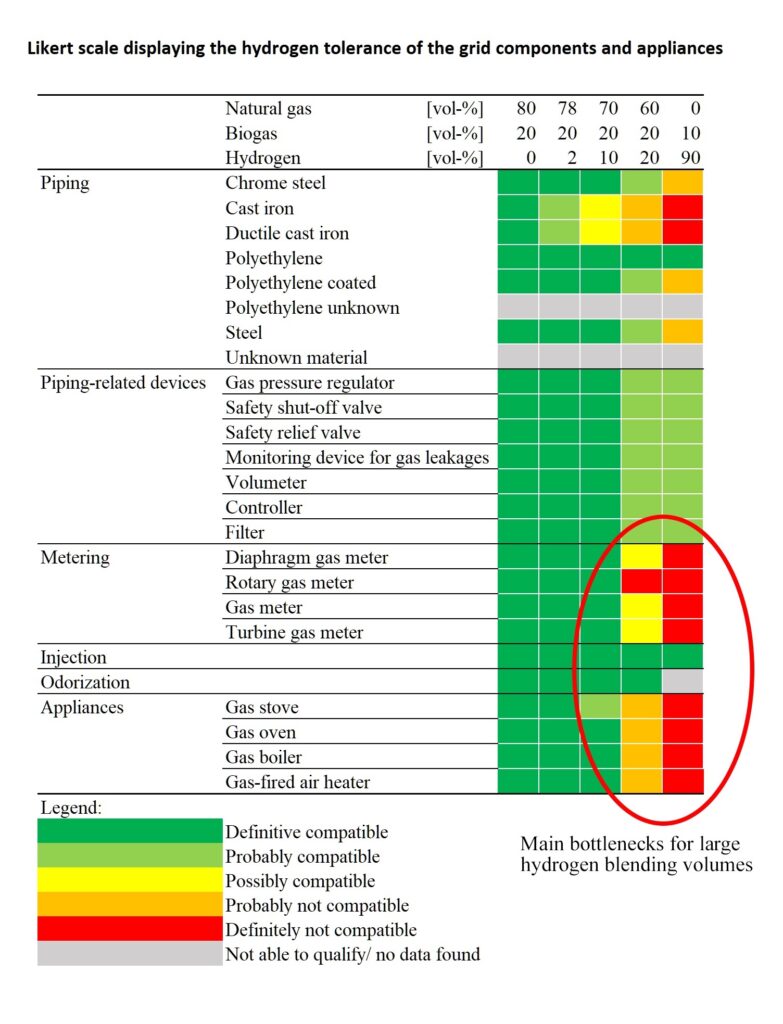With the introduction of the Energy Strategy 2050 and its goal to introduce a greater quantity of renewable energy production, chemical energy carriers are seen to be unavoidable to help to integrate these technologies. One promising chemical energy carrier in that regard is hydrogen. By injecting it into the natural gas grid, it can therefore act as a storage option and simultaneously aid in decarbonizing the gas grid.
This project therefore aimed at conducting an analysis of potential actions to be taken if hydrogen is blended into the existing natural gas grid on a distributional level. This was done by employing a literature review to identify chances and implications, as well as a cost-benefit analysis to display the main impacts on the total value of hydrogen blending.
As the results of the literature review show, a hydrogen blending level in the industry partner’s gas grid of up to 10 vol-% should be possible without need of large investments, while for larger blending levels the main bottlenecks are installed gas meters and end-use appliances. Furthermore, the results of the cost-benefit analysis show that some benefits are hard to monetize and therefore lead to lower overall net present values, making hydrogen blending less economically viable.
However, due to assumptions and generalizations to simplify the analyses, it is unclear how exact the outcomes of this project are. Nonetheless, this project can aid the industry partner in their decision process, as well as in providing crucial information for future, similar projects.
Preisträger: Belimo Holing AG, für den besten Abschluss im internationalen Studiengang Energy Systems Engineering

